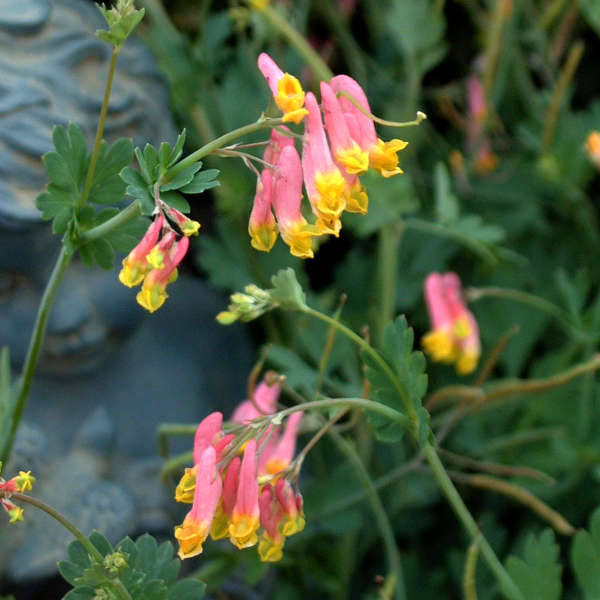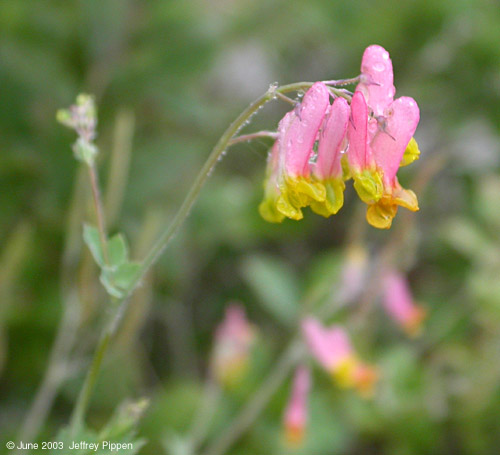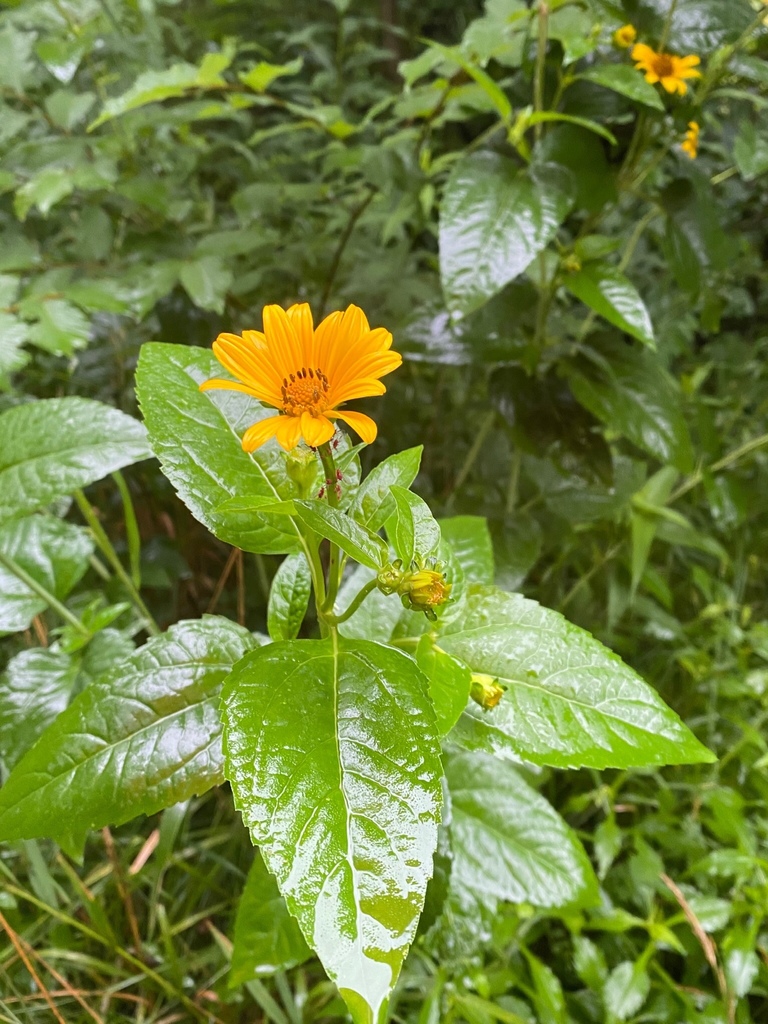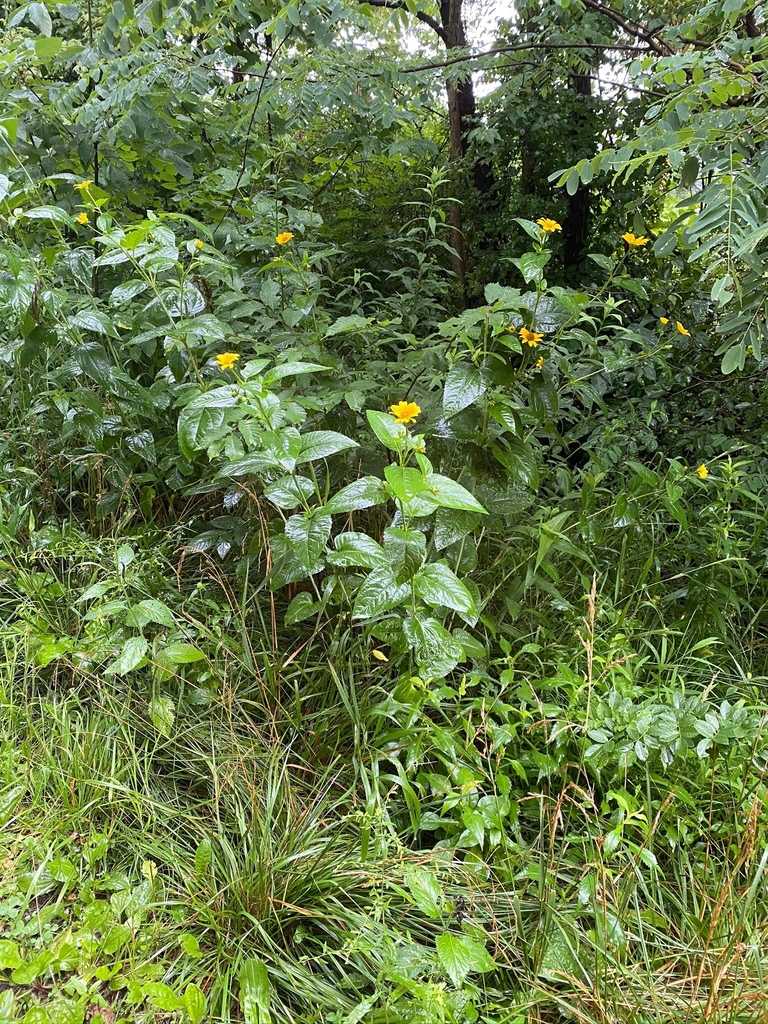Hey iNatters! We hope you’re all feeling refreshed and reinvigorated from the beautiful weekend! This week, we’re featuring Joe-Pye Weeds. Joe-Pye Weeds can be tricky to identify and are often confused with a close relative, the Bonesets. Before we dive into that, let’s touch on some history of the Joe-Pye weed.
Joe-Pye Weed is named after a folklore figure of the New England area in the late 1700s. Said to be a Native American medicine man by the name of Joseph Pye, he treated typhus with a concoction made from a plant that induced sweating to break and relieve the fever (note: some sources say he used his concoction to treat typhoid fever as well). Early reports associate Mr. Joseph Pye with the name Shauqueathquat, possibly his true name. However, other sources assert that the name Joe Pye could be a distortion of the Native American word for typhoid, jopi (cite: Speck and Dodge in The Scientific Monthly, Vol. 61, No. 1, pp. 63-66, “On the fable of Joe Pye, Indian herbalist, and Joe Pye Weed”).
Joe-Pye Weeds are some of the tallest wildflowers around, some growing up to 10 ft! They have whorled leaf arrangements of 3-7 leaves and pinkish-purple inflorescences, or clusters of smaller flowers. They used to belong to the genus Eupatorium, but are now classified in their own genus, Eutrochium. Three Joe-Pye Weed species call the Cuyahoga Valley home: Hollow Joe-Pye Weed (Eutrochium fistulosum), Spotted Joe-Pye Weed (Eutrochium maculatum), and Sweet-scented Joe-Pye Weed (Eutrochium purpureum). Below, we’ll walk through the identification process for Joe-Pye Weeds. Most of this can be found in Newcomb’s Wildflower Guide, a personal favorite of mine!
Step 1: What color is the flower?
Joe-Pye Weeds have a pinkish-purple inflorescence, while Bonesets often have a white flower.

In foreground: Common Boneset. In background: Spotted Joe-Pye Weed (Courtesy New Hampshire Garden Solutions).
Step 2: What if the flower isn’t present yet?
By late July, Boneset and Joe-Pye flowers should be open and blooming in Northeast Ohio. If you’re referring to this post at a different time of year, examine the leaves of the plant.
Boneset leaves are oppositely arranged on the stem and are described as perfoliate, meaning each leaf pair look as though it has been skewered onto or perforated by the stem. Or, Boneset leaves will be closely attached to the stem, with little or no petiole (the small stem that joins the leaf to the main stem). Joe-Pye leaves are arranged as whorls on the stem and they have a much more noticeable petiole. While we’re looking near the plant’s stem, some Boneset species have hairy stems, whereas Joe-Pyes will have smooth, hairless stems.
Lastly, Bonesets and Joe-Pyes have differing leaf textures. Boneset leaves are hairy on both the top and underside of the leaf and generally feel leatherier than a Joe-Pye leaf. Joe-Pye leaves will only have hair on the underside of the leaf.

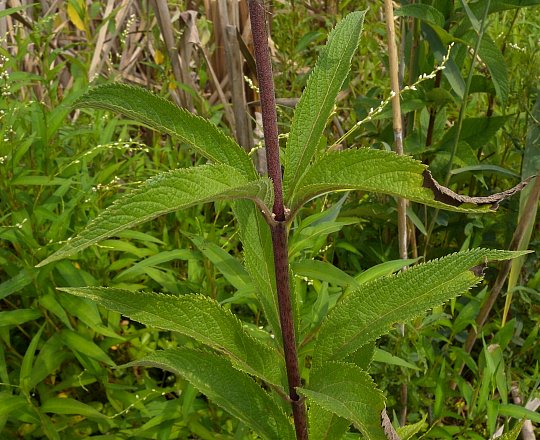
Left: Common boneset perfoliate leaves (Katy Chayka). Right: Spotted Joe-Pye leaf whorl (Courtesy Illinois Wildflowers).
Step 3: What shape is the top of the flower cluster?
Check out the general shape or outline of the pinkish-purple flower cluster. Does it have a flat top, or a rounded/domed shape? If you notice a flatter top, you likely have a Spotted Joe-Pye Weed! You can confirm this by checking out the stem of the plant. Spotted Joe-Pye will have either a purple stem with spots on it or, less commonly, a solid purple stem.
If you notice a rounded/domed top to the flower cluster, you could have either a Hollow Joe-Pye Weed, or a Sweet-scented Joe-Pye Weed (note: Newcomb’s groups Eastern Joe-Pye Weed under this feature as well. However, Eastern Joe-Pye prefers swampy coastal areas. CVNP is farther inland than this plant prefers, so we don’t have any reported sightings of Eastern Joe-Pye here in the park!)


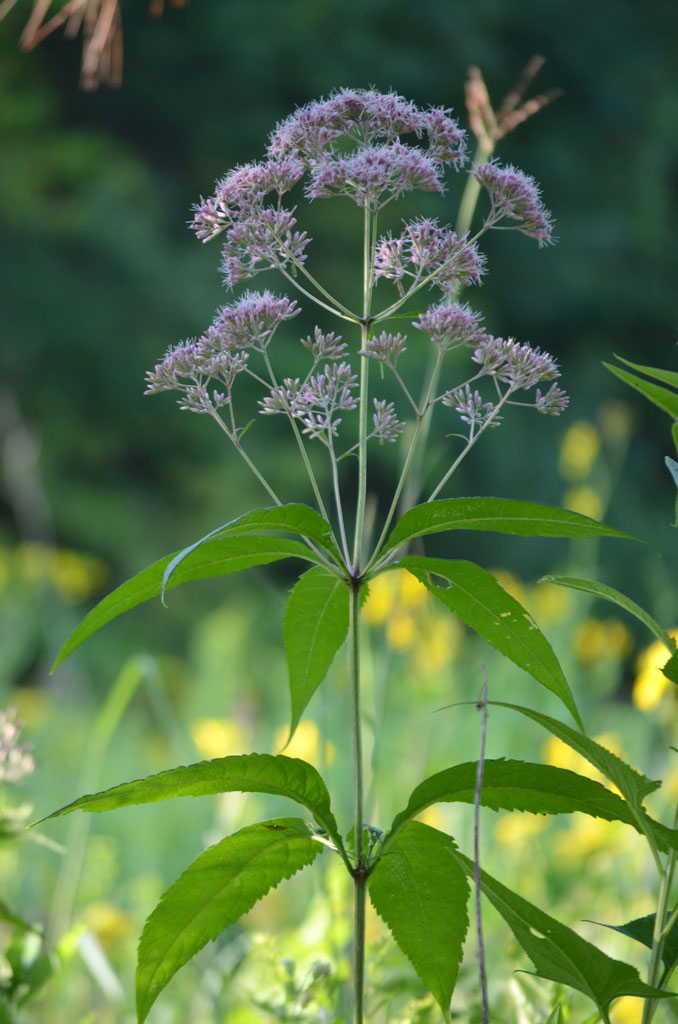
From Left to Right: Spotted Joe-Pye (D. Gordon E. Robertson), Hollow Joe-Pye (Gerald C. Williamson), and Sweet-scented Joe-Pye (courtesy: Prairie Moon Nursery).
Step 4: Look closely at the leaves!
Joe-Pye Weed leaves are arranged in whorls of 3-7 leaves. However, Spotted Joe-Pye and Sweet-Scented Joe-Pye rarely have more than 5 leaves in each whorl. So, if each whorl has five or more leaves, you might have a Hollow Joe-Pye Weed.
Also, check out the individual leaves. Joe-Pye Weed leaf edges are all toothed or serrate. However, the teeth on Hollow Joe-Pye Weed leaves are duller than that of Sweet-scented and Spotted Joe-Pye. Additionally, Sweet-scented Joe-Pye leaves are often slightly wider than Hollow Joe-Pye Weed leaves.
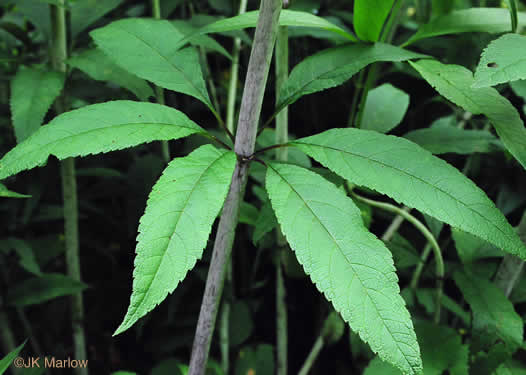
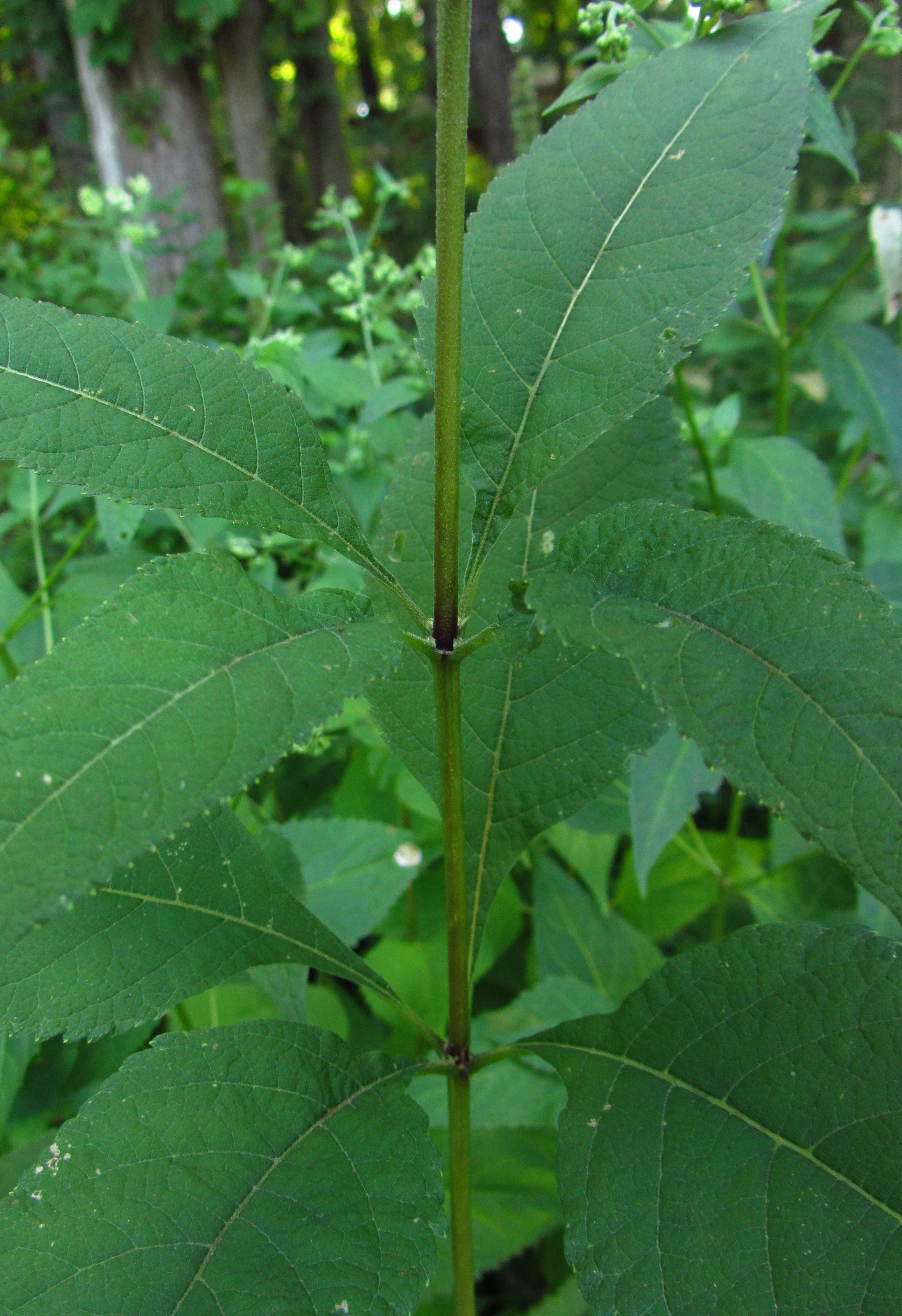
Left: Hollow Joe-Pye Weed (JK Marlow). Right: Sweet-scented Joe-Pye (Laura Belin)
Step 5: Look at the plant’s stem.
As we mentioned in Step 3, Spotted Joe-Pye will have either a purple-spotted or solid purple stem. Hollow Joe-Pye rarely has a spotted stem. It is often a solid dark to pale purple color. Sweet-Scented Joe-Pye often has a green stem that has purplish nodes (where the leaves attach to the stem). You can review some of the above pictures to see each stem more clearly!
Other notable characteristics: Please do not confirm these characteristics on Joe-Pyes in CVNP!
As the name suggests, the stem of Hollow Joe-Pye Weed is hollow. Joe-Pye flowers usually have a faint vanilla scent, however, the leaves of Sweet-scented Joe Pye will also give off a strong vanilla scent when they are crushed. However, confirming these characteristics will damage the plant, so we ask that you do not conduct this test on Joe-Pyes in CVNP.
Hopefully, these five steps are helpful when you’re searching for Joe-Pyes in CVNP this week. We look forward to seeing your observations and helping you identify them!
A last note: Though this feature touches on the medicinal use of Joe Pye Weed in years past, please do not harvest plants from CVNP for medicinal uses. Harvesting wild plants can be unsafe due to misidentification and is also illegal without a permit in National Parks. If you really want your own Joe-Pye, plenty of online stores sell them and some of our local county parks and their friends organizations host annual native plant sales.








